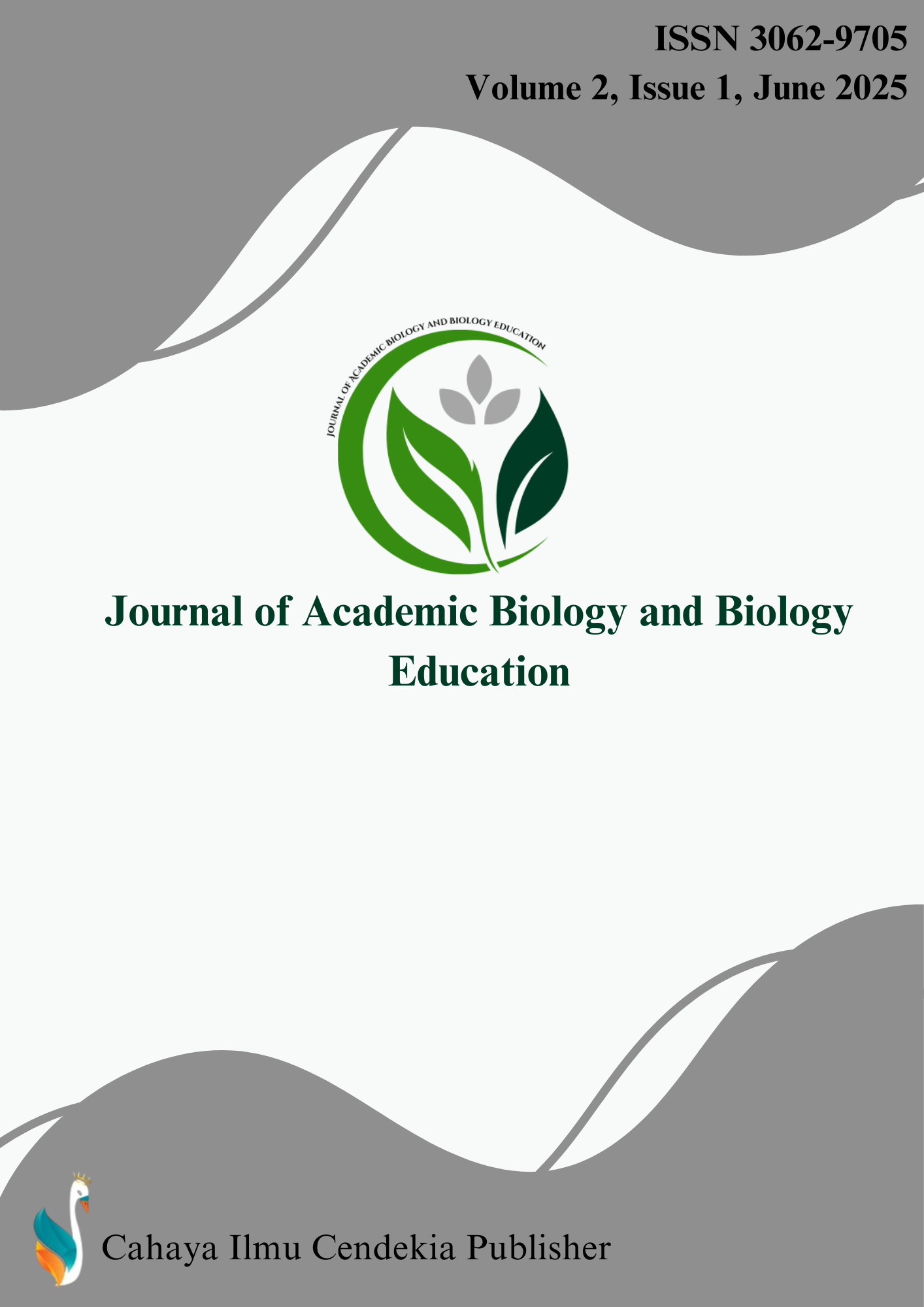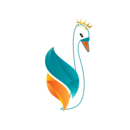The Influence of Curiosity on Students' Critical Thinking Skills as Viewed from the Perspective of Learning Motivation in Biology Learning on Cell Material
Abstract
Purpose of the study: This study aims to analyze the influence of curiosity on students' critical thinking skills as viewed from the learning motivation in biology learning on cell material, in government junior secondary school romin doko, Zaria.
Methodology: The research method used is quantitative with an associative survey approach. The sample consisted of 100 students in Government Junior Secondary School Romin Doko, Zaria who were selected through purposive sampling technique. The research instruments were in the form of a curiosity questionnaire, learning motivation, and a critical thinking essay test. Data analysis used inferential statistics using the Structural Equation Modeling–Partial Least Square (SEM-PLS) method.
Main Findings: The results show that curiosity has a significant effect on critical thinking skills (coefficient = 0.53) and learning motivation (coefficient = 0.48). Learning motivation also has an effect on critical thinking (coefficient = 0.23), and acts as a mediator in an indirect relationship. This model is able to explain 61% of the variation in students' critical thinking skills.
Novelty/Originality of this study: This study confirms the importance of strengthening the character of curiosity and learning motivation in improving the quality of students' critical thinking in biology learning.
References
A. D. Inayah, R. H. Ristanto, D. V. Sigit, and M. Miarsyah, “Analysis of science process skills in senior high school students,” Univers. J. Educ. Res., vol. 8, no. 4 A, pp. 15–22, 2020, doi: 10.13189/ujer.2020.081803.
I. L. L. Ping, L. Halim, and K. Osman, “Explicit teaching of scientific argumentation as an approach in developing argumentation skills, science process skills and biology understanding,” J. Balt. Sci. Educ., vol. 19, no. 2, pp. 276–288, 2020, doi: 10.33225/jbse/20.19.276.
M. Miarsyah, I. M. Putrawan, and D. Hermadianti, “Hubungan antara ketekunan (persistence) dengan hasil belajar biologi: studi korelasional terhadap siswa kelas X MIA di SMA Negeri 102 Jakarta [The relationship between persistence and biology learning outcomes: a correlational study of class X MIA student,” Biosf. J. Pendidik. Biol., vol. 9, no. 2, pp. 29–36, 2018, doi: 10.21009/biosferjpb.9-2.5.
Y. Yusipa, “Comparative analysis of students’ biology learning outcomes: memory and understanding aspects,” J. Acad. Biol. Biol. Educ., vol. 1, no. 1, pp. 1–9, 2024, doi: 10.37251/jouabe.v1i1.1012.
J. S. Gill et al., “Immunological signatures for early detection of human head and neck squamous cell carcinoma through RNA transcriptome analysis of blood platelets,” Cancers (Basel)., vol. 16, no. 13, 2024, doi: 10.3390/cancers16132399.
C. Navarro, M. Arias-Calderón, C. A. Henríquez, and P. Riquelme, “Assessment of student and teacher perceptions on the use of virtual simulation in cell biology laboratory education,” Educ. Sci., vol. 14, no. 3, 2024, doi: 10.3390/educsci14030243.
Tanti, D. A. Kurniawan, Kuswanto, W. Utami, and I. Wardhana, “Science process skills and critical thinking in science: Urban and rural disparity,” J. Pendidik. IPA Indones., vol. 9, no. 4, pp. 489–498, 2020, doi: 10.15294/jpii.v9i4.24139.
L. G. Snyder and M. J. Snyder, “Teaching critical thinking and problem solving skills how critical thinking relates to instructional design,” Delta Pi Epsil. J., vol. 1, no. 2, pp. 90–100, 2008, [Online]. Available: https://eric.ed.gov/?id=EJ826495
V. Serevina, D. A. Nugroho, and H. F. Lipikuni, “Improving the quality of education through effectiveness of e-module based on android for improving the critical thinking skills of students in pandemic era,” Malaysian Online J. Educ. Manag., vol. 10, no. 1, pp. 1–20, 2022, doi: 10.32585/ijimm.v3i2.2058.
E. Priawasana and A. Muis, “Development of learning cycle 5E oriented learning tools to critical thinking skills and creative thinking,” Indones. J. Instr., vol. 3, no. 2, pp. 86–99, 2021.
J. Holguin-Alvarez, J. Cruz-Montero, J. Ruiz-Salazar, R. L. Atoche Wong, and I. Merino-Flores, “Effects of feedback dynamics and mixed gamification on cognitive underachievement in school,” Contemp. Educ. Technol., vol. 17, no. 1, pp. 1–25, 2025, doi: 10.30935/cedtech/15717.
A. Fedorov and G. Mikhaleva, “Current trends in media and information literacy in research and scientific publications of the early 21st century,” Int. J. Media Inf. Lit., vol. 5, no. 2, pp. 153–163, 2020, doi: 10.13187/IJMIL.2020.2.153.
Y. Hamdani and Yohandri, “Preliminary analysis of physical module practicum modelling project based learning to improve scientific skills of high school students,” 2IOP Conf. Ser. Mater. Sci. Eng., vol. 1481, no. 012074, pp. 1–9, 2020, doi: 10.1088/1742-6596/1481/1/012074.
L. F. Shangaraeva, A. A. Yarkhamova, Z. A. Biktagirova, and D. Agol, “The formation of students’ creative independence at the english language classes,” Int. J. Environ. Sci. Educ., vol. 11, no. 6, pp. 1267–1274, 2016, doi: 10.12973/ijese.2016.397a.
J. Yin, Y. Zhu, T. T. Goh, W. Wu, and Y. Hu, “Using educational chatbots with metacognitive feedback to improve science learning,” Appl. Sci., vol. 14, no. 20, 2024, doi: 10.3390/app14209345.
Y. Wang, L. L. Wang, L. Wong, Y. Li, L. Wang, and Z. H. You, “SIPGCN: a novel deep learning model for predicting self-interacting proteins from sequence information using graph convolutional networks,” Biomedicines, vol. 10, no. 7, 2022, doi: 10.3390/biomedicines10071543.
V. Czok, M. Krug, S. Müller, J. Huwer, and H. Weitzel, “Learning effects of augmented reality and game-based learning for science teaching in higher education in the context of education for sustainable development,” Sustain., vol. 15, no. 21, 2023, doi: 10.3390/su152115313.
A. Henne, S. Syskowski, M. Krug, P. Möhrke, L. J. Thoms, and J. Huwer, “How to evaluate augmented reality embedded in lesson planning in teacher education,” Educ. Sci., vol. 14, no. 3, 2024, doi: 10.3390/educsci14030264.
M. Lantzouni, V. Poulopoulos, and M. Wallace, “Gaming for the education of biology in high schools,” Encyclopedia, vol. 4, no. 2, pp. 672–681, 2024, doi: 10.3390/encyclopedia4020041.
M. Reiser, M. Binder, and H. Weitzel, “Effects of design-based learning arrangements in cross-domain, integrated STEM lessons on the intrinsic motivation of lower secondary pupils,” Educ. Sci., vol. 14, no. 6, 2024, doi: 10.3390/educsci14060607.
S. Y. Chen, P. H. Lin, Y. H. Lai, and C. J. Liu, “Enhancing education on aurora astronomy and climate science awareness through augmented reality technology and mobile learning,” Sustain., vol. 16, no. 13, 2024, doi: 10.3390/su16135465.
K. M. Baker, K. W. Stickney, and D. D. Sachs, “STEM cooperating teachers’ professional growth: the positive impacts of a year-long clinical residency collaboration,” Educ. Sci., vol. 14, no. 8, 2024, doi: 10.3390/educsci14080899.
A. A. Razak et al., “Improving critical thinking skills in teaching through problem-based learning for students: a scoping review,” Int. J. Learn. Teach. Educ. Res., vol. 21, no. 2, pp. 342–362, 2022, doi: 10.26803/ijlter.21.2.19.
J. Castellví, C. Escribano, R. Santos, and J. Marolla, “Futures education: curriculum and educational practices in Australia, Spain, and Chile,” Comunicar, vol. 30, no. 73, pp. 45–55, 2022, doi: 10.3916/c73-2022-04.
Astalini, Darmaji, D. A. Kurniawan, and S. W. Octavia, “Assembler edu e-modules: improving argumentation skills, perseverance, and curiosity in physics learning,” J. Ilm. Ilmu Terap. Univ. Jambi, vol. 8, no. 2, pp. 550–562, 2024, doi: 10.22437/jiituj.v8i2.37238.
Ö. Özyurt, “Examining the critical thinking dispositions and the problem solving skills of computer engineering students,” Eurasia J. Math. Sci. Technol. Educ., vol. 11, no. 2, pp. 353–361, 2015, doi: 10.12973/eurasia.2015.1342a.
A. Walker and T. Kettler, “Developing critical thinking skills in high ability adolescents: effects of a debate and argument analysis curriculum,” Talent, vol. 10, no. 1, pp. 21–39, 2020, doi: 10.46893/talent.758473.
A. Umam, Suparmi, and Sukarmin, “Analysis of critical thinking skill profile on the concept of simple harmonic motion using two tier instrument test,” J. Phys. Conf. Ser., vol. 1567, no. 3, pp. 6–10, 2020, doi: 10.1088/1742-6596/1567/3/032085.
S. Motevalli, A. Perveen, and M. Tresa Anak Michael, “Motivating students to learn: an overview of literature in educational psychology,” Int. J. Acad. Res. Progress. Educ. Dev., vol. 9, no. 3, pp. 63–74, 2020, doi: 10.6007/ijarped/v9-i3/7779.
M. Mardiana, “Penerapan metode STAD untuk meningkatkan motivasi dan hasil belajar bahasa inggris di kelas XI IPA 3 SMA Negeri 1 Bandar Baru [Application of the STAD method to improve motivation and English learning outcomes in class XI IPA 3 of State Senior High School,” J. Sos. Hum. Sigli, vol. 2, no. 1, pp. 13–19, 2020, doi: 10.47647/jsh.v2i1.133.
P. Zhang and S. Li, “Associative cultural landscape approach to interpreting traditional ecological wisdom: a case of Inuit habitat,” Front. Archit. Res., vol. 13, no. 1, pp. 79–96, 2023, doi: 10.1016/j.foar.2023.09.008.
K. Kamid, D. A. Kurniawan, and A. M. Nawahdani, “Scientific learning model: analytical thinking and process skills in mathematics,” J. Educ. Res. Eval., vol. 6, no. 3, pp. 238–249, 2022, doi: 10.23887/jere.v6i3.49159.
N. Tor and G. Gordon, “Digital interactive quantitative curiosity assessment tool: questions worlds,” Int. J. Inf. Educ. Technol., vol. 10, no. 8, pp. 614–621, 2020, doi: 10.18178/ijiet.2020.10.8.1433.
H. Mohajan, “Quantitative research: a successful investigation in natural and social sciences,” J. Econ. Dev. Environ. People, vol. 9, no. 4, pp. 52–79, 2020, doi: 10.26458/jedep.v9i4.679.
M. A. Valerio et al., “Comparing two sampling methods to engage hard-to-reach communities in research priority setting,” BMC Med. Res. Methodol., vol. 16, no. 1, pp. 1–11, 2016, doi: 10.1186/s12874-016-0242-z.
H. Ames, C. Glenton, and S. Lewin, “Purposive sampling in a qualitative evidence synthesis,” BMC Med. Res. Methodol., 2019.
C. Andrade, “The inconvenient truth about convenience and purposive samples,” Indian J. Psychol. Med., vol. 43, no. 1, pp. 86–88, 2021, doi: 10.1177/0253717620977000.
S. Raharja, M. R. Wibhawa, and S. Lukas, “Mengukur rasa ingin tahu siswa [measuring students’ curiosity],” Polyglot J. Ilm., vol. 14, no. 2, p. 151, 2018, doi: 10.19166/pji.v14i2.832.
U. Fatonah and E. J. Wicaksana, “The influence of self-efficacy and learning motivation of high school students on the understanding of the concepts of work and energy,” EduFisika J. Pendidik. Fis., vol. 8, no. 3, pp. 316–326, 2023, doi: 10.59052/edufisika.v8i3.29633.
O. A. Ivanov, V. V. Ivanova, and A. A. Saltan, “Likert-scale questionnaires as an educational tool in teaching discrete mathematics,” Int. J. Math. Educ. Sci. Technol., vol. 49, no. 7, pp. 1110–1118, 2018, doi: 10.1080/0020739X.2017.1423121.
N. M. Fuad, S. Zubaidah, S. Mahanal, and E. Suarsini, “Improving junior high schools’ critical thinking skills based on test three different models of learning,” Int. J. Instr., vol. 10, no. 1, pp. 101–116, 2017, doi: 10.12973/iji.2017.1017a.
A. K. I. Syahwani and A. Soeyono, “The effect of lecturer competence in online learning methods on student college satisfaction during the pandemic,” Procedia Soc. Sci. Humanit., vol. 1, no. c, pp. 239–250, 2021, doi: 10.21070/pssh.v1i.53.
A. Ashrafi, A. Zareravasan, S. Rabiee Savoji, and M. Amani, “Exploring factors influencing students’ continuance intention to use the learning management system (LMS): a multi-perspective framework,” Interact. Learn. Environ., vol. 30, no. 8, pp. 1475–1497, 2022, doi: 10.1080/10494820.2020.1734028.
Y. I. Suhara, N. D. Siska, A. F. Fadilah, and M. A. Supriyadi, “Analisis perbandingan modul elektronik dengan modul cetak pada pembelajaran IPS untuk melihat indikator karakter peduli lingkungan [Comparative analysis of electronic modules with printed modules in social studies learning to see indicators of environment,” J. Basic Educ. Res., vol. 3, no. 3, pp. 69–75, 2022, doi: 10.37251/jber.v3i3.269.
V. Amrhein, D. Trafimow, and S. Greenland, “Inferential statistics as descriptive statistics: there is no replication crisis if we don’t expect replication,” Am. Stat., vol. 73, no. sup1, pp. 262–270, 2019, doi: 10.1080/00031305.2018.1543137.
Y. Karaca, “Computational complexity-based fractional-order neural network models for the diagnostic treatments and predictive transdifferentiability of heterogeneous cancer cell propensity,” Chaos Theory Appl., vol. 5, no. 1, pp. 34–51, 2023, doi: 10.51537/chaos.1249532.
L. von Kotzebue et al., “The framework dikolan (digital competencies for teaching in science education) as basis for the self-assessment tool dikolan-grid,” Educ. Sci., vol. 11, no. 12, p. 775, Nov. 2021, doi: 10.3390/educsci11120775.
M. V. Mawn, P. Carrico, K. Charuk, K. S. Stote, and B. Lawrence, “Hands-on and online: scientific explorations through distance learning,” Open Learn., vol. 26, no. 2, pp. 135–146, 2011, doi: 10.1080/02680513.2011.567464.
A. Whitney, “Thinking/feeling: emotion, spectatorship, and the pedagogy of horror,” CEA Forum, vol. 43, no. 1, pp. 37–61, 2014.
D. Ramdani, H. Susilo, Suhadi, and Sueb, “The effectiveness of collaborative learning on critical thinking, creative thinking, and metacognitive skill ability: meta-analysis on biological learning,” Eur. J. Educ. Res., vol. 11, no. 3, pp. 1607–1628, 2022, doi: 10.12973/eu-jer.11.3.1607.
Copyright (c) 2025 FK Lawal, Hanis Isfa, Norsuhana Abdul Hamid

This work is licensed under a Creative Commons Attribution 4.0 International License.
Authors who publish with this journal agree to the following terms:
- Authors retain copyright and acknowledge that the Journal of Academic Biology and Biology Education is the first publisher licensed under a Creative Commons Attribution 4.0 International License.
- Authors are able to enter into separate, additional contractual arrangements for the non-exclusive distribution of the journal's published version of the work (e.g., post it to an institutional repository or publish it in a book), with an acknowledgment of its initial publication in this journal.
- Authors are permitted and encouraged to post their work online (e.g., in institutional repositories or on their website) prior to and during the submission process, as it can lead to productive exchanges and earlier and greater citation of published work.



.png)

.png)
.png)








